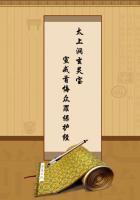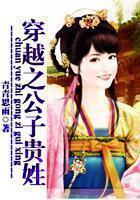Meanwhile, there was created a "Baby Saving Show," a set of graphic pictures conveying to the eye methods of sanitation and other too often disregarded essentials of the wise care and feeding of babies; and this travelled, like a theatrical attraction, to different parts of the city.
"Little Mothers' Leagues" were organized to teach the little girl of ten or twelve, so often left in charge of a family of children when the mother is at work during the day, and demonstrations were given in various parts of the city.
The Child Federation now undertook one activity after the other.Under its auspices, the first municipal Christmas tree ever erected in Philadelphia was shown in the historic Independence Square, and with two bands of music giving concerts every day from Christmas to New Year's Day, attracted over two hundred thousand persons.A pavilion was erected in City Hall Square, the most central spot in the city, and the "Baby Saving Show" was permanently placed there and visited by over one hundred thousand visitors from every part of the country on their way to and from the Pennsylvania Station at Broad Street.
A searching investigation of the Day Nurseries of Philadelphia--probably one of the most admirable pieces of research work ever made in a city--changed the methods in vogue and became a standard guide for similar institutions throughout the country.So successful were the Little Mothers' Leagues that they were introduced into the public schools of Philadelphia, and are to-day a regular part of the curriculum.The Health Centre, its success being proved, was taken over by the city Board of Health, and three others were established.
To-day The Child Federation is recognized as one of the most practically conducted child welfare agencies in Philadelphia, and its methods have been followed by similar organizations all over the country.It is now rapidly becoming the central medium through which the other agencies in Philadelphia are working, thus avoiding the duplication of infant welfare work in the city.Broadening its scope, it is not unlikely to become one of the greatest indirect influences in the welfare work of Philadelphia and the vicinity, through which other organizations will be able to work.
Bok's interest and knowledge in civic matters had now peculiarly prepared him for a personal adventure into community work.Merion, where he lived, was one of the most beautiful of the many suburbs that surround the Quaker City; but, like hundreds of similar communities, there had been developed in it no civic interest.Some of the most successful business men of Philadelphia lived in Merion; they had beautiful estates, which they maintained without regard to expense, but also without regard to the community as a whole.They were busy men;they came home tired after a day in the city; they considered themselves good citizens if they kept their own places sightly, but the idea of devoting their evenings to the problems of their community had never occurred to them before the evening when two of Bok's neighbors called to ask his help in forming a civic association.
A canvass of the sentiment of the neighborhood revealed the unanimous opinion that the experiment, if attempted, would be a failure,--an attitude not by any means confined to the residents of Merion! Bok decided to test it out; he called together twenty of his neighbors, put the suggestion before them and asked for two thousand dollars as a start, so that a paid secretary might be engaged, since the men themselves were too busy to attend to the details of the work.The amount was immediately subscribed, and in 1913 The Merion Civic Association applied for a charter and began its existence.
The leading men in the community were elected as a Board of Directors, and a salaried secretary was engaged to carry out the directions of the Board.The association adopted the motto: "To be nation right, and State right, we must first be community right." Three objectives were selected with which to attract community interest and membership: safety to life, in the form of proper police protection; safety to property, in the form of adequate hydrant and fire-engine service; and safety to health, in careful supervision of the water and milk used in the community.
"The three S's," as they were called, brought an immediate response.















